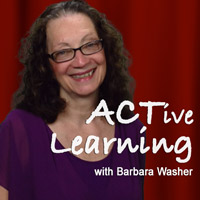| 6 , 7 , 8 | |
| Theater | Math |
| Grade Level Program | Integration |
| 5 | 60 min |
|
60-90 minute sessions with a culminating grade-level Share Number of visits is flexible and are typically held once or twice a week to best integrate with selected math unit. Schedule determined during the pre-planning meeting and based on the needs of the school. *The program is designed to integrate with the geometry unit. If scheduled otherwise, activities can be adapted to incorporate skills from an alternative math unit. |
|
| In-School Short Term Residency | |
| All year | In-School, |
| $10 | 0 |
| yes | In-Person |
|
Props, handouts, prompts or reference materials based on selected unit or topic Additional simple furniture pieces or cubes to represent components of the setting, if needed. |
|
|
A drawing showing dimensions of the school's performance space Non-lined paper and/or graph paper for each student Tools for measuring (rulers, yardsticks, tape measures, etc) Agreed upon materials or copies Copy of the selected math unit or chapter and related text |
|
|
Open space in classroom or multi-purpose space large enough for entire class to participate on their feet simultaneously or spread out to work in small groups Access to tables/desks/chairs for writing or drawing activities A large space or auditorium reserved for Session 4 and Session 5, if sharing with the whole grade level |
|
|
I can use shapes/movement to create an indoor or outdoor location, identify key elements and sketch a simple floor plan (bird's eye view) using geometric shapes and appropriate spatial relationship. I can use design concepts, measurements and mathematical calculations to create a scale drawing of a floor plan representing a location from a familiar text or original scene. I can collaborate with peers to combine several settings into one overall production design and create a scale drawing of a floor plan, a perspective rendering and/or 3-D model of the set for a specific stage space. |
|
|
Design by the Numbers. Strengthen Math Skills.
Create a residency uniquely designed for your students. Teachers may select any math unit and a familiar language arts text, if desired. Collaboration with the Teaching Artist assures alignment of specific theatre exercises with curricular concepts and problem solving. (See Additional Notes for examples) The residency typically consists of 5 sessions with possible teacher directed classwork in between. Each meeting incorporates a warm-up, a brief review, 1-2 drama activities, self-reflection, a summary, and a preview. Session 1 - Students gain comfort and confidence working simultaneously in their own personal space to enhance focus and inspire creativity. Becoming key elements of familiar indoor or outdoor environments, students arrange components into stage pictures based on shape, size, and spatial relationship. Sessions 2 and 3 - Based on close reading of a selected text or improvised scenes, the class recalls specific key locations. Choosing one setting, students individually compile details and sketch a floor plan. In small groups they compare/contrast designs for that environment and make revisions for a scale drawing. Session 4 - Groups use representations of standard platforms and stair units to test possible arrangements for combining several scenes into one production floor plan. Alternatively, students test the functionality of their designs using available furniture and improvising action from the text. Groups apply the criteria of stage dimensions, number of characters or action in each scene, shape/arrangement of key elements, and angles/levels for visibility to their designs. Session 5 - Students present final floor plans, compare/contrast choices made by other groups, give/receive feedback, and assess the overall effectiveness of each production design. In Dramatic Geometry, students explore the application of math in set design, on paper and on their feet. Participants experience a balance of ease and challenge, choice and structure, movement and table work, personal exploration and group collaboration throughout the creative process. |
|
|
Examples:
Students clarify their sense of place by creating the schoolhouse and watering hole settings from A Long Walk to Water by Linda Sue Park and performing scenes in those locations. Students design the courtroom, church, and various porches from To Kill a Mockingbird by Harper Lee and combine them into one workable floor plan for a production. *If a common text is not available from the Language Arts curriculum, the Teaching Artist provides prompts for developing original scenes. Feedback: *Teachers note a curricular link to Scale Factor and Transformations. *Students liked "moving in Math class, contributing ideas, working in groups" and were inspired to add non-standard elements to enhance their designs. Possible follow-up: Students may extend their learning with perspective drawings/renderings, 3-D models or written explanations of the mathematical operations utilized to create their designs. Scheduling alternative: At the discretion of the Math Teacher, one full session or portions of Sessions 2 and/or 3 can focus specifically on the math concepts prioritized for that grade-level and may be led by the Classroom Teacher with support from the Teaching Artist. *All ACTive Learning Through Drama Programs have been developed and implemented by a professional Theatre Educator collaborating with Classroom Teachers and Arts Specialists. |
|
|
1-3 are welcome to assist in the classroom, if the teacher desires. Parents, guardians and administrators could watch the informal Share in Session 5. |
|
Grade 6 |
||||
|
||||
Grade 7 |
||||
|
||||
Grade 8 |
||||
|

